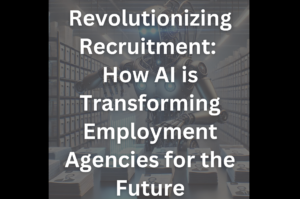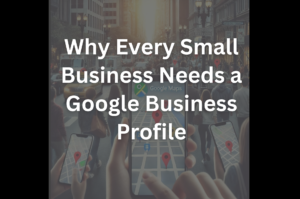**Disclosure:** We believe in honesty and transparency to the fullest extent. Some of the links on this blog are affiliate links, meaning, at no additional cost to you, we will earn a commission if you click through and make a purchase. This is one of the simplest ways you can support us.
Software as a Service (SaaS) has revolutionized how businesses operate and access software solutions. The future of SaaS is promising, with innovations shaping the industry to be more efficient, intelligent, and secure. Let’s delve into some emerging trends and predictions that will redefine the future of SaaS.
Embracing Artificial Intelligence and Machine Learning:
Artificial Intelligence (AI) and Machine Learning (ML) are no longer buzzwords; they are becoming integral parts of SaaS solutions. AI-driven SaaS is set to transform the industry in unprecedented ways.
Personalization and Customer Experience: AI and ML will enable SaaS platforms to deliver personalized experiences to individual users. By analyzing user behavior, preferences, and interactions, AI can tailor software applications to meet specific needs and enhance user satisfaction. This level of personalization will drive user engagement and increase the value proposition of SaaS products.
Predictive Analytics and Insights: AI-powered predictive analytics will become a norm in SaaS. By leveraging historical data, ML algorithms can predict future patterns and behaviors, allowing businesses to make informed decisions and stay ahead of the curve. For example, a sales forecasting SaaS product could use machine learning to predict future sales trends based on historical data, enabling businesses to adjust their strategies accordingly.
Insight: AI and ML will become a fundamental component of SaaS, enhancing user experiences, optimizing operations, and providing valuable insights to businesses.
Automation and Efficiency: AI-driven automation will streamline business processes, reducing manual effort and operational costs. Chatbots, for instance, can handle routine customer inquiries, freeing up human support teams to focus on more complex issues. This trend will lead to increased productivity and a better return on investment for SaaS customers.
Blockchain – Enhancing Security and Transparency:
Blockchain technology, known for its role in cryptocurrencies, is also gaining traction in the SaaS industry. Blockchain-based SaaS solutions will bring unprecedented levels of security and transparency.
Data Security and Privacy: Blockchain’s decentralized and immutable nature makes it an ideal solution for securing sensitive data. Integrating blockchain into SaaS applications can ensure data integrity, prevent unauthorized access, and build trust among users. This will be especially important as data privacy regulations become more stringent globally.
Prediction: Blockchain technology will be increasingly used to secure sensitive data in SaaS applications, providing robust security measures and enhancing customer trust.
Smart Contracts for Automation: Blockchain-based smart contracts will enable automated and trustless transactions within SaaS platforms. These self-executing contracts will simplify processes, reduce errors, and minimize the need for intermediaries, leading to faster and more efficient business operations.
The Rise of Low-Code and No-Code SaaS:
The future of SaaS will also witness the democratization of software development with the rise of low-code and no-code solutions.
Low-code and No-code Development Platforms: These platforms will empower businesses and individuals with minimal coding skills to create, customize, and deploy SaaS applications. This trend will lead to a surge in innovation and the development of specialized SaaS solutions tailored to specific niche markets.
Prediction: Low-code and no-code platforms will make SaaS development more accessible, leading to a rapid increase in tailor-made SaaS solutions.
Hyper-Automation and the Future of Work:
As SaaS solutions become more sophisticated, hyper-automation will transform how businesses operate. SaaS platforms will integrate with various tools and systems, creating seamless workflows and enabling end-to-end automation.
Improved Collaboration and Remote Work: Hyper-automation will improve collaboration among team members and enable seamless remote work. SaaS platforms that integrate different communication, project management, and task-tracking tools will be essential in the future of work.
Prediction: SaaS will play a critical role in enabling the future of work, providing businesses with the tools they need to adapt to hybrid and remote work environments.
Integration and Ecosystems
In the future, SaaS will focus on seamless integration and creating robust ecosystems. SaaS providers will strive to integrate their products with various third-party applications and services, enabling customers to connect their tools and workflows effortlessly. This trend will lead to enhanced productivity, streamlined processes, and a more efficient overall user experience.
SaaS will become more accessible and affordable
As technology advancements continue, SaaS solutions will become even more accessible and affordable to businesses of all sizes. The rise of cloud computing and the increasing availability of high-speed internet will make SaaS more accessible to remote and distributed teams, empowering small and medium-sized enterprises to leverage advanced software capabilities.
SaaS will play a crucial role in the gig economy
With the rise of the gig economy, SaaS solutions will play a vital role in enabling freelance workers and independent contractors to collaborate and manage their businesses effectively.
Here are some cutting-edge potential uses of SaaS that are currently being developed or are on the horizon:
Quantum Computing as a Service (QCaaS): Quantum computing is a nascent technology that has the potential to solve complex problems that are currently impossible to handle by traditional computers. QCaaS would allow businesses to access and utilize quantum computing power through cloud-based services, revolutionizing industries like drug discovery, material science, and optimization algorithms.
Virtual and Augmented Reality (VR/AR) SaaS: VR/AR technology is still in its early stages of integration with SaaS. However, we can expect VR/AR SaaS platforms that enable businesses to create immersive training experiences, product design simulations, and virtual collaboration spaces. This could be particularly useful in real estate, education, and retail sectors.
Blockchain-based SaaS Identity Management: While blockchain is already being used for data security in SaaS, blockchain-based identity management solutions are still emerging. These solutions could provide decentralized and secure authentication and authorization services, reducing the risk of data breaches and enhancing user privacy.
Cognitive SaaS: Cognitive SaaS would leverage natural language processing (NLP) and cognitive computing to enable software applications to understand and respond to human language. This could lead to improved customer service, automated chatbots that can understand context, and intelligent decision-making support systems.
Autonomous SaaS: Autonomous SaaS systems would leverage advanced AI and machine learning to operate independently, making decisions and performing tasks without human intervention. For example, an autonomous SaaS platform could manage marketing campaigns, optimize pricing strategies, and predict customer behavior independently.
Distributed Cloud SaaS: As the Internet of Things (IoT) continues to grow, distributed cloud SaaS will become more important. This approach involves distributing cloud computing resources to edge devices and remote locations, enabling real-time data processing and analysis at the edge of networks.
Environmental, Social, and Governance (ESG) SaaS: ESG is becoming a critical concern for businesses, and SaaS solutions that help companies track, analyze, and improve their ESG performance are emerging. These platforms could provide data-driven insights for sustainability reporting, carbon footprint tracking, and supply chain transparency.
Human-Centric Design SaaS: This approach emphasizes designing SaaS applications with a deep understanding of human behavior and needs. Human-centric design SaaS could help businesses create more user-friendly, intuitive, and engaging software experiences.
It’s important to note that while these potential uses are on the horizon, they are still in various stages of development and implementation. However, as technology continues to advance and the demand for innovative solutions increases, these applications of SaaS are likely to become a reality in the future.
Neuralink-like Brain-Computer Interfaces (BCI) as a Service:
BCI technology aims to connect the human brain directly to computers and other devices. Future SaaS offerings might provide neural interface services, allowing users to control computers, access information, or communicate with others using their thoughts. This could have applications in various fields, including healthcare, education, and accessibility.
Integrated Sustainability Management as a Service (SMSaaS):
As sustainability becomes an increasingly critical business consideration, SMSaaS could offer a comprehensive platform for businesses to track, manage, and report their sustainability efforts. It may include modules for carbon footprint tracking, waste management, and supply chain transparency.
Autonomous Vehicles as a Service (AVaaS):
While not strictly SaaS, AVaaS could be a subscription-based service where users access autonomous vehicles for transportation needs. Autonomous vehicles could be integrated with SaaS platforms to provide seamless mobility solutions, including ride-sharing, logistics, and delivery services.
Space Exploration and Resource Utilization as a Service:
The future of space exploration and utilization could be shaped by SaaS offerings. Companies may provide services for remote sensing, satellite data analysis, and even resource mining in space.
Health Monitoring and Personalized Medicine SaaS:
Advancements in wearable technology and biometrics will enable personalized health monitoring and management SaaS platforms. These services could provide real-time health data, personalized recommendations, and even predict potential health risks before they manifest.
Eco-Tourism SaaS:
An environmentally-conscious SaaS could provide platforms for travelers to plan eco-friendly trips, while simultaneously allowing companies and local governments to manage tourism resources and promote sustainability.
In conclusion, the future of SaaS is poised for tremendous growth and innovation. The integration of AI, ML, and blockchain will enhance the security, personalization, and efficiency of SaaS products. The rise of low-code and no-code platforms will democratize software development, leading to a surge in specialized SaaS solutions. Moreover, hyper-automation will redefine how businesses operate, making workflows more efficient and enabling seamless collaboration.
As these trends unfold, SaaS companies must adapt and innovate to stay ahead of the competition. The future looks bright for SaaS, and it is set to play an even more critical role in shaping the digital landscape of businesses worldwide. Businesses that embrace these emerging trends and leverage the power of SaaS will be well-positioned to succeed in the ever-evolving digital economy.










